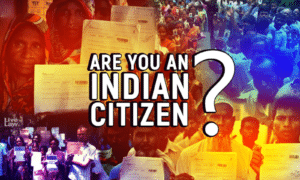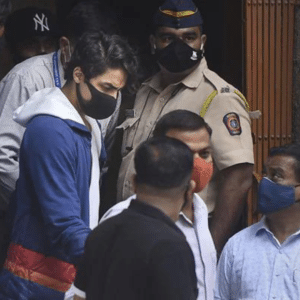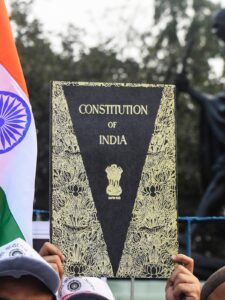
Among the rights provided under the Indian Constitution, there is no word that discriminates one gender from the other, except in certain reasonable cases under DPSPs and a few other grounds. After the significant judgment of recognition of LGBTQ+ rights in the Naz Foundation case in 2018, Parliament came up with the bill to protect the rights of transgender persons as a way to achieve the principles enshrined in the Indian Constitution. This law again ensured that the Indian Constitution is progressive in nature and a living entity that gets updated along with the society. This article will look into the act enacted as protection and a few of the issues that have also been reported with the bill.
Objectives of the act:
Before looking into the provisions of the act, it is important to look into the preamble or the object clause of the Transgender Persons (Protection of rights) act 2019. The object behind this enactment was to provide protection of rights of transgender persons and their welfare and also matters related to it or connected therewith. The basis for this can be witnessed through the Constitutional principles and the Supreme Court judgment on transgender rights.
Definition Transgender Persons:
Section 2(k) of the act defines who Transgender Person is for the purpose of applicability of the same to them. It states that transgender person means a person whose gender does not match with the gender assigned to that person at birth and includes the transman or transwoman person, irrespective of whether such person has gone through the sex reassignment or hormone therapy, with intersex variations and person having such a socio-cultural identity as Kinner, hijra, aravani and jogta.
Prohibition against Discrimination:
Chapter 2 of the Transgender person act, 2019 deals with the provisions relating to the prohibition of any kind of discrimination against transgender persons. It prohibits any person or any establishment from discriminating against transgender persons. It provides nine grounds on which the persons should not be discriminated against. They range from the denial of educational or employment opportunities or any kind of unfair treatment in any services or occupation. It covers all aspects of the transgender person’s circle similar to ordinary persons, and in case of any violations, then the right shall be protected through the Court of justice.
Recognition of Identity of Transgender Persons:
Chapter 3 of the act deals with the recognition of the identity of Transgender persons. Section 4 of the act, under chapter 3, provides two primary rights in respect to the provisions of the act to transgender persons. Firstly, they will have the right to be recognized as such, and secondly, any person who has been recognized as a transgender under the act shall have a right to self-perceived gender identity. Section 5 of the act enables a transgender person to make an application for an identification certificate as a transgender under the act. In the case of a child, the parent shall make an application on their behalf. Once the person makes the application, it is upon the Magistrate of such district under section 6 of the act to identify such person as a transgender after following the procedure set up this act for this purpose. It is important to note why this certificate is much important for a transgender person. It is because, and as per section 6(3) of the act, only through this certificate the rights shall be conferred on such person and acts as proof of identity.
Welfare Measures by the Government:
Section 8 under Chapter 4 of the act vests certain obligations as part of their welfare activities towards transgender persons. Their prime duty or obligation is to make sure that transgender persons are included within the society as a whole, and there are steps to secure their full and effective participation. All those welfare measures that are framed should focus on their protection of rights and interests and proper access to the same.
Apart from the above mentioned, sections 9 to 12 under chapter 5 of the act vests certain obligations on establishments and other persons. Section 9, as an enabling provision, tries to protect transgender persons from discrimination in the case of employment and promotes a healthy environment for those persons. Section 10, along with section 9, ensures establishments are complying with their obligations. In case of any violations or mismanagement, then a complaint officer appointed for this purpose as part of the redressal mechanism under section 11 of the act shall deal the same.
Section 12 gives the right of residence to all transgender persons, and it is a bundle of rights that carries supplementary rights under the right to residence, and in case a family is unable to maintain or take care of the transgender, then the competent Court shall intervene to place them in the rehabilitation center.
National Council for Transgender Persons:
Section 16 under chapter 7 of the Transgender person act, 2019 enables the central government to constitute a National Council for Transgender persons in order to exercise the powers conferred on them and for the performance of their duties assigned to them. Functions of the National Council have been provided under section 17 of the act, and the union government from time to time shall also prescribe their functions.
Offenses and Punishments:
Whoever violates the provisions or goes against their obligations that are prescribed under the act or forces, denies or in a way harms transgender persons who would ultimately result in taking away their and their recognitions, then such person shall be punishable with imprisonment for a term that shall not be less than six months and which may extend to two years with fine.
Conclusion:
Not only the legislature but the Judiciary also has to be applauded for its significant judgments and as an effective protector of the rights of its citizens, who through its 2014 judgment and in further cases have insisted on the rights and recognition of the transgender person. It is now the duty of the executive to ensure they are protected and measures are taken accordingly.
-
19 Aug 2021 Know Your LawCitizenship laws in India
-
06 Oct 2021 Legal AffairsAryan Khan’s Narcotics case – Legality
-
09 Sep 2021 Know Your LawCONCEPT OF LEGAL AID IN INDIA
-
16 Aug 2021 Know Your LawThe preamble to the Constitution of India
-
02 Nov 2021 Know Your LawOutraging women modesty- Section 506 and 509 of IPC




